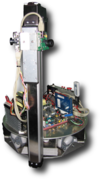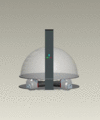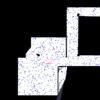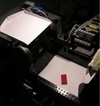|
.: Luke Cole - Home Page :.
(This site hasn't had many changes since 2013) (older version: lc.homedns.org 2003-2005) (long-standing biz: eteckonline.com 2001-2004, coletek.homedns.org 2005-2006, evolved to coletek.org 2007+) (other early online webapps here) |


|
National ICT of Australia (NICTA)InsectBot RobotInsect behaviour has been a rich source of inspiration for the field of robotics as the perception and navigation problems encountered by autonomous robots are faced also by insects. This project works towards faster and more robust biologically-inspired, vision-based algorithms for various tasks such as navigation and control. To facilitate the research interests and goals of insect inspired robotics, primarily Luke Cole has been developing a novel mobile robot platform on a part-time basis since mid-2006, which has been appropriately named InsectBot. Two primary design features distinguish the InsectBot from many of the more common robotics research platforms [ cite: Activmedia, iRobot, Acroname ]. The first primary design feature is horizontal omni-directional motion. The second primary design feature is vertical motion for a stereo camera system that uses a pair of hemispherical view ("fish-eye") camera lens, each providing a field of view. These two design features allow 4 degrees of motion, such as simulating the aerial landing of a honeybee. Vision Based Localisation
DROS
Daves Robotic Operating System (DROS) is a set of software modules needed for robotics. The following list is some major software, where Luke Cole was the sole (or primary) developer:
Electronic Circuits
Linux PIC Programmer: PICPrgA Linux serial programmer for Microchip PIC's via the PC parallel port interface. Visual Object RecognitionRecognition over a large database. [ publication: Visual Object Recognition using Template Matching ] LEGO© Photo RobotThis LEGO© robot was developed in 2004 to autonomously acquire many images of LEGO© bricks. After 6 months of almost continuous operation, over 200 000 images where acquired from over 100 different LEGO© bricks. Most of this data was then used to research large database object recognition (see above). [ Object set of LEGO© bricks ]
|
|||||||||||||||||||||||||||||||||||||||||||||||||||||||
|
© 2000-2025 Luke Cole All rights reserved |

















